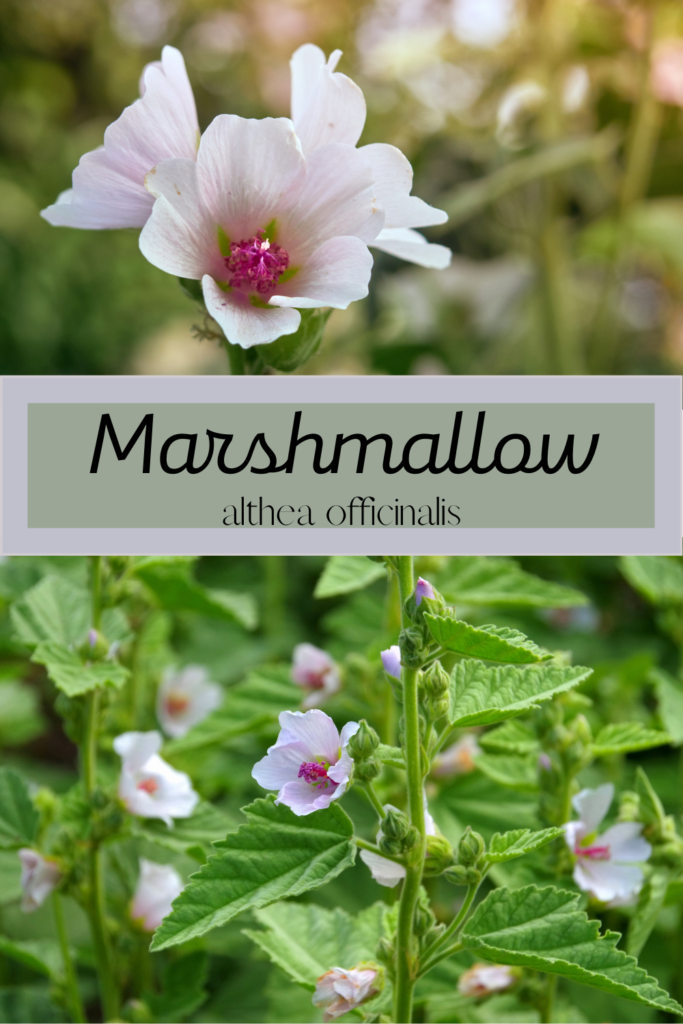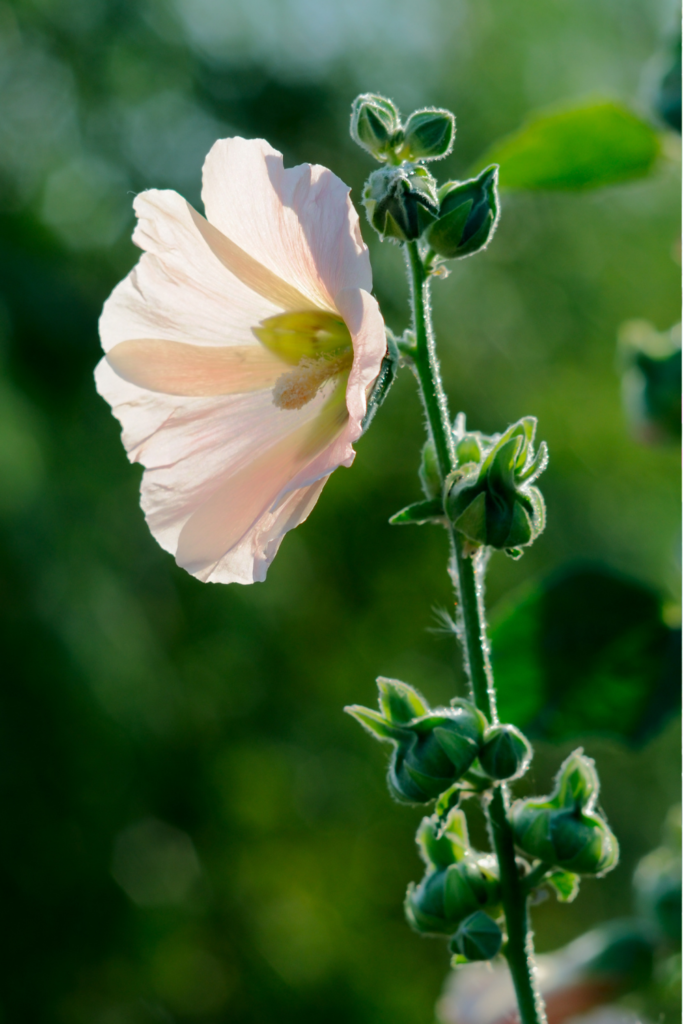The information below is not medical advice. I am not a medical professional; I am studying to be a clinical herbalist. Herbalists do not diagnose or treat disease. Please use common sense whenever learning about herbs and always check with a medical professional before taking any herb.
The following Materia Medica is from my own personal herbal reference journal and the information is taken from a variety of sources. All sources have been linked below the article for you to do your own research!

IN THE GARDEN: Mucilage content of the plant (all parts) is highest in late fall and winter, (approx 11%) and lowest in the spring and summer (5%-6%)
Harvest roots in fall, after plant has had 2-3 years of growth. Leaves can be harvested throughout the summer while fresh and soft
SAFETY: Safe to freely administer infusions. May inhibit absorption of drugs, so drink separately.

THE FINE PRINT: Root: Demulcent, diuretic, emollient, expectorant, tonic, nervine, relaxant, nutritive, antispasmodic, vulnerary, endocrine, restorative, anti-inflammatory
Leaf: Demulcent, expectorant, diuretic, emollient, anticatarrhal, pectoral astringent, diaphoretic, tranquilizer, vulnerary
ENERGETICS: Sweet // cooling, moistening, soothing
ORGANS AFFECTED: Respiratory, GI, Nervous, Mental Emotional, Kidneys
THE SCIENCE: Root: 25% mucilage, tannins, pectin, asparagine, high in iron selenium, magnesium, and calcium.
Leaf: Mucilage, trace of essential oils, flavonoids (quercetin, kaempferol and diosmetin glucosides), Polyphenolic Acids (syringic, caffeic, salycylic, vanillic)
The flowers, leaves and roots are used somewhat interchangeably. However the root has been used primarily for Digestive System, and the leaf in the urinary system and respiratory system/lungs (doctrine of Signatures would also guide us to Lungs given the tiny hairs on the leaves representing the cilia in the lungs)
DOSING:
Infusion: An overnight cold water infusion works best for the soothing demulcent properties. 1 cup chopped root sits overnight in cool water or 1-3 TBS dried root overnight, strain, and drink the next day.
ALLIES:
Calendula – leaky gut/gut healing. Healing for any GI ulceration. Calendula heals wounds, Marshmallow soothes inflammation.
Nettle – mineral depletion/inability to absorb nutrients from SAD diet
Astragalus – weakness in lungs recurring lung infections, dry lingering cough, etc. Deep immune support.
USES:
Respiratory Health: Using the doctrine of signatures, the hairs on the leaves are reminiscent of cilia on our lungs. Both the roots and leaves are a soothing expectorant. Use when there is a dry cough in the throat or upper bronchus, bronchitis, or asthma. Whooping cough. Mucilages are polysaccharides – slimy and thick. They serve inflamed tissue without penetrating the cells at all. The mucilage acts physically rather than chemically, coating the skin’s surface so healing can happen. Also good to use for dry nasal passages due to head cold. According to animal research, mucilaginous herbs like Althaea root inhibit coughing by forming a protective coating on the mucosal lining of the respiratory tract, shielding it from irritants.
Digestion: Soothing and anti-inflammatory to the digestive tract. Helps form a thick coating in the digestive tract which can help heal the gut lining. Use for over-acidity, ulcers, gastric/duodenal. Low enzyme production with gastric acidity. Diarrhea, dysentery, Crohn’s disease, constipation, External hemorrhoids. Heartburn, irritable bowel, or as a mouthwash for inflamed gums (from braces or other).
Lactation: Topically, it is used to treat sore, cracked nipples as well as engorged breasts when used as a compress. Orally it is a galactagogue and said to increase milk supply.
Wound Healing: Studies have shown that the antimicrobial properties were effective in healing wounds with gram positive bacterial infections. Matthew Wood deems it healing for skin, burns, and boils, and dry red or cracked skin.
Sore throat: Soothing to the tissues in a sore throat. Provides a nice coating over irritated tissue or mucous membranes.
My Personal Experience and Notes:
Althea is a damp, wet herb. When combined with water, it releases a thick, sticky layer (that’s the mucilage property), which is why it’s indicated as soothing for dry, irritated, unproductive coughs. I think it’s important to emphasize that Marshmallow is not recommended for just any type of cough, or any type of person. Given that it is very wet by nature, you want to make sure the person you are giving it to does not have a very wet condition or nature. If you have a very wet, productive cough that is bringing up mucus, you probably do not want to drink Marshmallow because it’s just going to add to the wet factor. We always want the body to be in balance, so a wet cough will most likely not be improved by coating the lungs in even more dampness. This is why it’s important to know the person and understand the deeper symptoms and causes before giving a random herb that says it can help “coughs”. I hope that makes sense!
REFERENCES:
http://www.woodherbs.com/Marshmallow.html
http://www.herbgirlsathens.com/blog/marshmallow-materia-medica
https://www.herbrally.com/monographs/marshmallow
https://www.mountainroseherbs.com/products/marshmallow-root/profile

